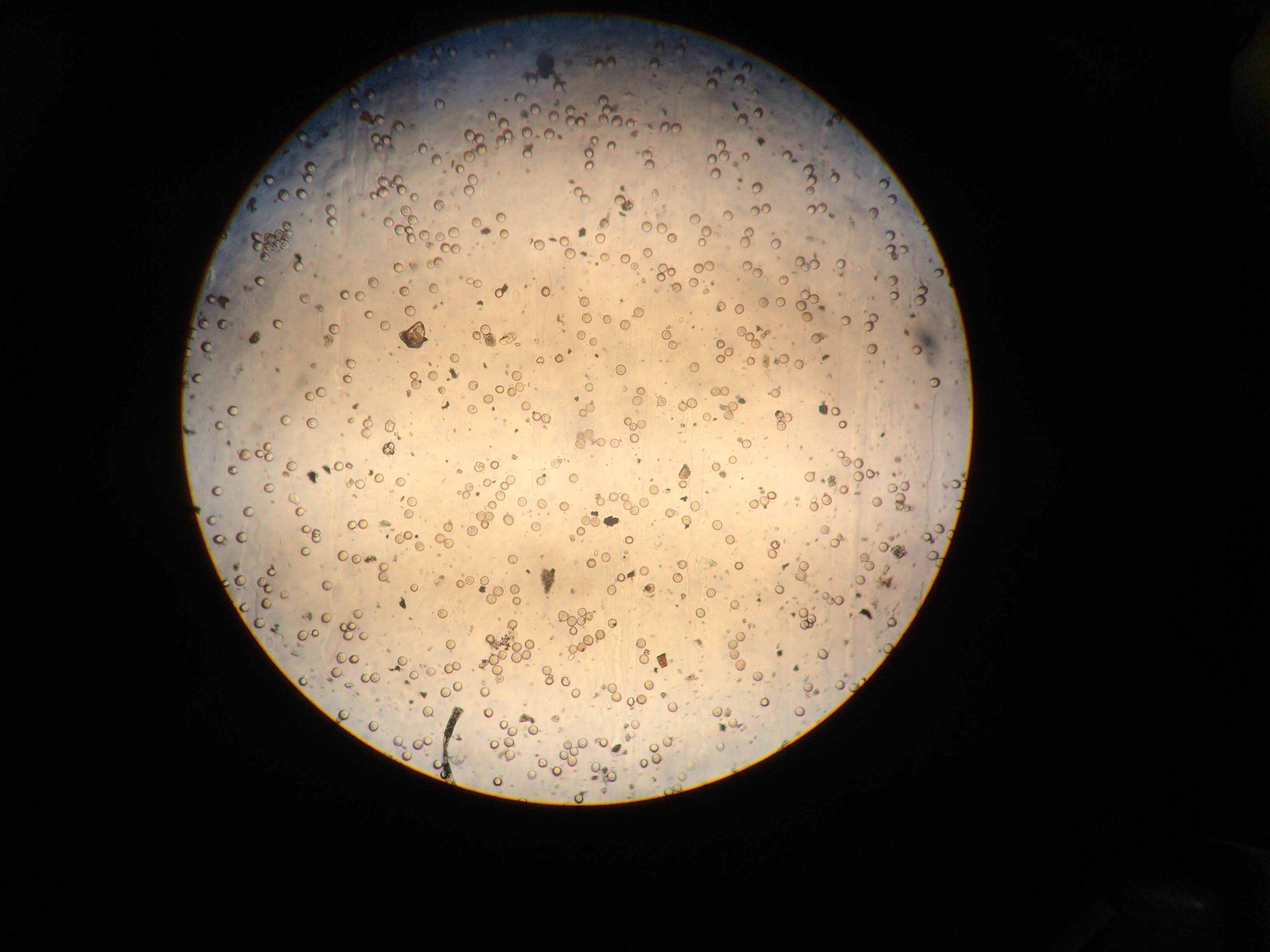AUSTIN -- "Cedar season" is one phrase many Central Texas residents brace for each year, with the "cedar fever" making many feel miserable.
The conditions were prime for pollen Jan. 7. A cold front shuttled in dry air, and 40 mile per hour wind gusts. That triggered plenty of fury for pollen to fly. For this story, KVUE traveled to 10 different locations around Austin to test pollen counts, and uncovered where the worst of the cedar resided.
In this non-scientific study, slides were prepared and our MK-3 Air Sampler took two, 10 minute air samples from about 7 feet off the ground at each location. The samples were brought back to KVUE and were analyzed under the microscope.
While analyzing the glass slides, two drops of iodine are applied before looking under the microscope. In turn, this allows each grain of pollen to pop with color, typically between red and purple, making it easier to see.
From there, each grain of pollen is hand counted. Once the number of grains are counted, it is categorized and the numbers used on air.
The following video of Albert Ramon counting cedar pollen was posted to the KVUE Insider Facebook page the day of this study.
For Cedar:
- Low: 0-100 grains per cubic meter (gr/m3)
- Medium: 101-500 grains per cubic meter
- High: 501+ grains per cubic meter
Each slide in our survey recorded high cedar pollen counts. When it comes to the actual top 10 list, the final results were surprising.
- Buda – 22,357 gr/m3
- Downtown Austin – 10,389 gr/m3
- Lake Travis – 10,129 gr/m3
- Lakeway – 8,631 gr/m3
- KVUE Studios, North Austin – 3,663 gr/m3
- Pflugerville – 2,557 gr/m3
- Round Rock – 2,490 gr/m3
- Georgetown – 2,397 gr/m3
- San Marcos – 2,331 gr/m3
- Cedar Park – 1,979 gr/m3
When this survey was conducted in 2004, Cedar Park topped the list. One possible reason for its lower ranking: explosive growth and construction that took down cedar trees.
Julie Renfro of Buda could not believe what the study uncovered.
"I think Buda belongs at the top of a lot of lists, but I would never would have thought of cedar pollen being one of them. I cannot even tell you where the closest cedar tree is," she said.
Other Buda residents weren't happy with the results.
"I don't like it," said Betty Foster of Buda.
"Your eyes are on fire. It's really, really bad," said Buda resident Rex Johnson.
Whether you live in Buda or Cedar Park, you need to plan year round for cedar fever.
"For people that have a miserable cedar season this year, once the season is over, that is the time to take action. Don't wait until next cedar season because it's too late to do anything," said Dr. Allen Lieberman, an allergist with the Austin Allergy Center.
Lieberman also warns simply cutting down cedar trees won't eliminate the problem.
"Climate changes are also being associated with longer seasons," he said. "Where certain seasons use to be very defined, maybe four weeks a year. Now, maybe they are six weeks. The seasons are lasting longer with more pollen that is more potent. So that is they type of trend we are seeing across parts of the country."
Though cedar season is a dreaded time for some of us, make sure to sit back and relax as the season is winding down.
If you would like to check out today's pollen count, go here to check out the Allergy Forecast.


